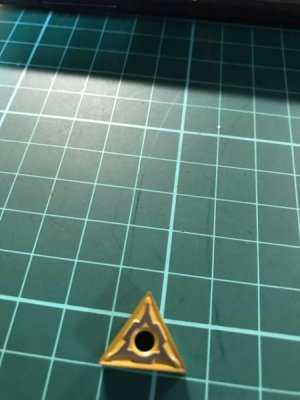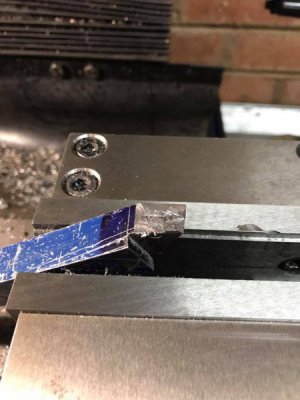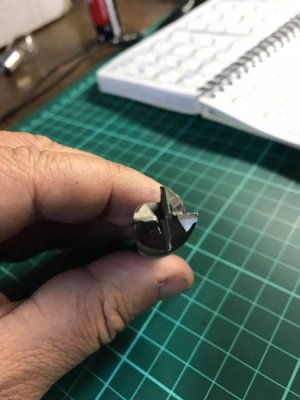- Joined
- Aug 31, 2014
- Messages
- 50
I hope to graduate someday from the beginners forum. (Try to ask advanced questions, but I am still struggling with the fundamentals)
Hi I have a problem: I want to make a holder for a TNMG carbide tip. I have a old boring bar and I milled 2 x 30 degree angles and a 7 degree neg rake. With the second 30 degree angle the end mill started eating the bar. The tip of the mill is blunt. It is a new industrial quality end mill (FEW). The end mill is 14mm The speed is 710rpm with a slow feed. I did not use coolant. The bar looks to be mild steel. I used the tip of the end mill most of the time(plunge cutting?). It is HSS. What am I doing wrong? Hell at the price of end mills I cannot burn it so quick. Would it be better to use Cobalt Cutters, I see in the Cromwell Catalogue they are almost the same price as HSS. Would it be better to use coolant? Oil? I thought it would go better when u chucked the Chinese mills and opted for the better (much more expensive) mills.



Hi I have a problem: I want to make a holder for a TNMG carbide tip. I have a old boring bar and I milled 2 x 30 degree angles and a 7 degree neg rake. With the second 30 degree angle the end mill started eating the bar. The tip of the mill is blunt. It is a new industrial quality end mill (FEW). The end mill is 14mm The speed is 710rpm with a slow feed. I did not use coolant. The bar looks to be mild steel. I used the tip of the end mill most of the time(plunge cutting?). It is HSS. What am I doing wrong? Hell at the price of end mills I cannot burn it so quick. Would it be better to use Cobalt Cutters, I see in the Cromwell Catalogue they are almost the same price as HSS. Would it be better to use coolant? Oil? I thought it would go better when u chucked the Chinese mills and opted for the better (much more expensive) mills.



